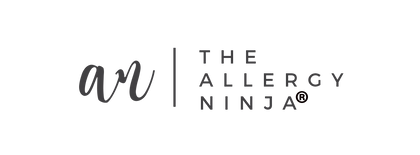
You’ve got this allergy thing down pat. You’ve gotten good at scanning labels in the supermarket to make sure the cereal you’re about to toss in the cart is nut-free. You’ve learned that sometimes milk shows up in things like hot dogs – a good reminder to check packaged foods even if you think they’re safe. You remember that sometimes companies change their processes or their recipes and so you check the label on that old reliable go-to snack just in case it now contains egg.
You do deserve a pat on the back. This allergy stuff can be tough and learning to master a trip to the market is worth a round of applause. Keep up the good work. Before we get too deep into celebrating, though, let’s talk about the other products you need to be keeping an eye out for. Just because we’re talking about food allergies, doesn’t mean food is the only potential minefield. These allergens you’ve gotten good at identifying in the things you eat, can crop up in many non-edible places too.
Developing a New Label Habit
First things first. Before we dive into some of the items you need to be looking at more closely, let’s talk about the difference between these packages and what you’ve grown accustom to looking over. The current labeling laws (aka FALCPA) only require packaged, FDA-regulated foods to be labeled clearly for the top eight allergens (peanut, tree nut, milk, egg, wheat, soy, fish, and shellfish). The products we’ll be talking about do not fall under those guidelines. You’re going to have to skim through the full ingredient list carefully and you may need to become familiar with alternative terms like “casein hydrolysate” if you’re avoiding milk and “albumin” if egg is on your no-go list. You’ll find a helpful list of these terms on each of FARE’s overview pages for common allergens.
Self-Care Products
Hair products, lotions, soaps, sunblock, and even your eyeshadow can contain food allergens. Scan those labels for wheat, soy, milk, and tree nut oils, to name a few. This is something our family learned the hard way. A couple of years ago we realized our son had a split lip that was not healing. We had tried all kinds of well-known brand lip balms to no avail. I started to do some research on hidden ingredients and discovered, to my dismay, that these balms contained ingredients like almond oil, dairy, and wheat that were not yet required to be on the label. This experience was the early impetus behind the creation of The Allergy Ninja brand.
Craft Items
What little kid doesn’t enjoy smushing their fingers in Play-Doh or finger painting with tempera paints? For food allergy parents, however, these fun activities need to come with a bit of caution. Play-Doh, as well as similar products form other brands, contains wheat. Tempera paints may contain egg, soy can be hiding in your crayons, and milk may be present in dustless chalk. In other words, before you dive into arts and crafts, research your products and look for safe alternatives.
Pet Food and Other Supplies
Your child loves your dog and your dog loves your child. There’s plenty of cuddles and puppy kisses to go around, which is a good reason to be careful with the food and treats you’re giving your pet. Peanut butter, fish, shellfish, wheat, dairy, egg, and other allergens are often common ingredients in pet foods, supplements and treats. Scan those labels before you check-out.
Alcohol
Although alcohol is something you consume, it does not fall under the FALCPA guidelines. Your adult beverages, however, may be chock-full of food allergens like wheat, milk and tree nuts! Do your research ahead of time. It can be easy to let your guard down when you’re imbibing, so get in the habit of restricting your selections to those drinks and brands you know to be safe.
Home & Garden
Before you fill-up your backyard birdfeeder, take a glimpse at the ingredients. Peanuts, nuts, wheat, and milk products may be in the seed mix. You’ll also want to scan garden products like fertilizers, potting soil and mulch, as some of them can contain food allergens.
Turning our attention inside the house: Crushed nut shells can sometimes be used for filling in bean bags or other stuffed items. Soy may be found in your favorite candle and cleaning products. Well, you get the idea. You don’t need to live in fear. You just need to be sure you’re checking labels outside the food aisles, too.
